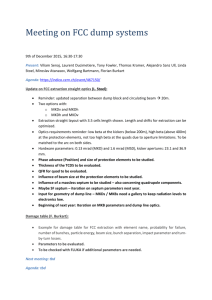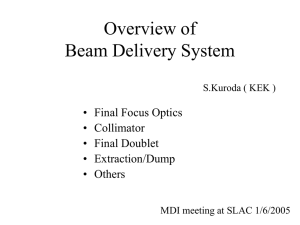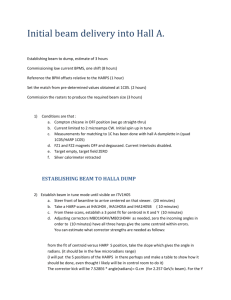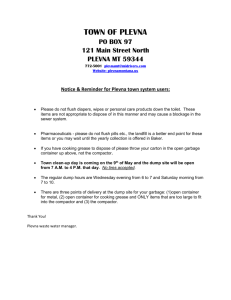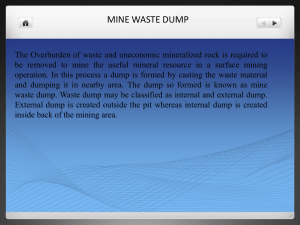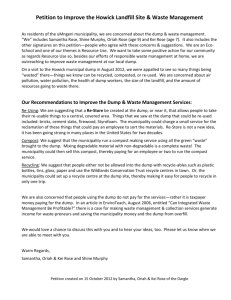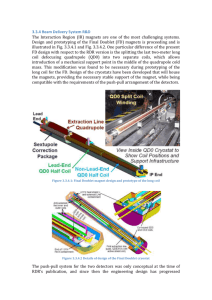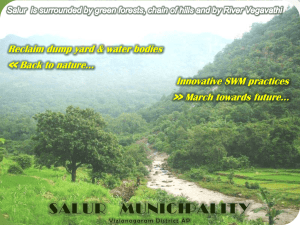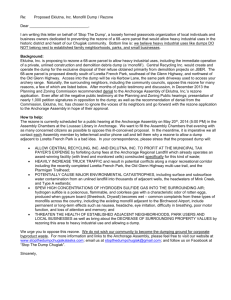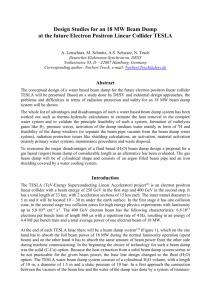NotesFCCdump_02dec15 - Indico
advertisement
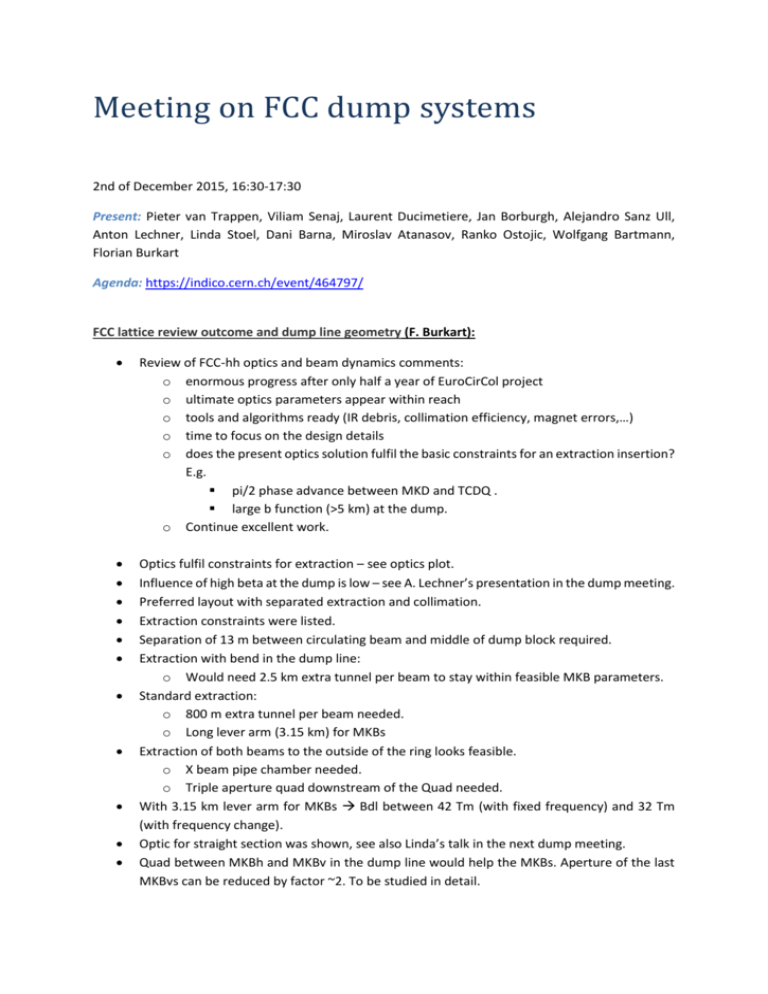
Meeting on FCC dump systems 2nd of December 2015, 16:30-17:30 Present: Pieter van Trappen, Viliam Senaj, Laurent Ducimetiere, Jan Borburgh, Alejandro Sanz Ull, Anton Lechner, Linda Stoel, Dani Barna, Miroslav Atanasov, Ranko Ostojic, Wolfgang Bartmann, Florian Burkart Agenda: https://indico.cern.ch/event/464797/ FCC lattice review outcome and dump line geometry (F. Burkart): Review of FCC-hh optics and beam dynamics comments: o enormous progress after only half a year of EuroCirCol project o ultimate optics parameters appear within reach o tools and algorithms ready (IR debris, collimation efficiency, magnet errors,…) o time to focus on the design details o does the present optics solution fulfil the basic constraints for an extraction insertion? E.g. pi/2 phase advance between MKD and TCDQ . large b function (>5 km) at the dump. o Continue excellent work. Optics fulfil constraints for extraction – see optics plot. Influence of high beta at the dump is low – see A. Lechner’s presentation in the dump meeting. Preferred layout with separated extraction and collimation. Extraction constraints were listed. Separation of 13 m between circulating beam and middle of dump block required. Extraction with bend in the dump line: o Would need 2.5 km extra tunnel per beam to stay within feasible MKB parameters. Standard extraction: o 800 m extra tunnel per beam needed. o Long lever arm (3.15 km) for MKBs Extraction of both beams to the outside of the ring looks feasible. o X beam pipe chamber needed. o Triple aperture quad downstream of the Quad needed. With 3.15 km lever arm for MKBs Bdl between 42 Tm (with fixed frequency) and 32 Tm (with frequency change). Optic for straight section was shown, see also Linda’s talk in the next dump meeting. Quad between MKBh and MKBv in the dump line would help the MKBs. Aperture of the last MKBvs can be reduced by factor ~2. To be studied in detail. Study optics, beam sizes and position for absorbers. Prepare table with beam parameters, bunch separation and probability for failure cases for TCDS, TCDQ, etc. for FLUKA team. Study impact of Quad on MKB parameters. Study: o Dump cavern size. o Beam dump window. o Stable field time of MSE in case of a failure. o Beam pipe at dump with > 80 cm radius. o X – Chamber and beam separation of a few sigma. Document MKB parameters - and dump pattern iterations with the FLUKA team. New septum concept (D. Barna): Produce a field-free region within a magnet by persistent eddy-currents in a superconducting shield. Very interesting concept. Studies from 1972: 1.8 T shielded with 3 mm Nb3Sn layer – was used in bubble chamber. 1979: 176 layers of Nb3Sn shielded 4.9 T. New studied performed by Nippon Steel. Coaxial sc cylinders can be used as combined function magnet. With different geometries it can be arranged in a FODO structure. Open questions: o Do we need a homogeneous dipole field? o Can we profit from a combined function magnet? o What are the optical requirements on the septa? o Can we use 'non-standard' solutions, fields? Possibility to shape the beam in dump line. Possibility to be used as combined septum for both beams. Should be studied and included in the FCC extraction optics considerations. Next meeting: 09.12.2015 16.30-17.30, 865-1-D17 Agenda: Update on optics for extraction straight (L. Stoel)
